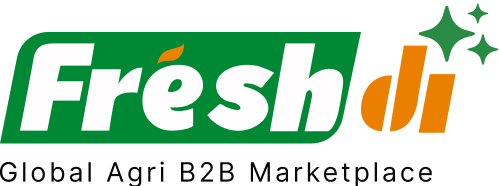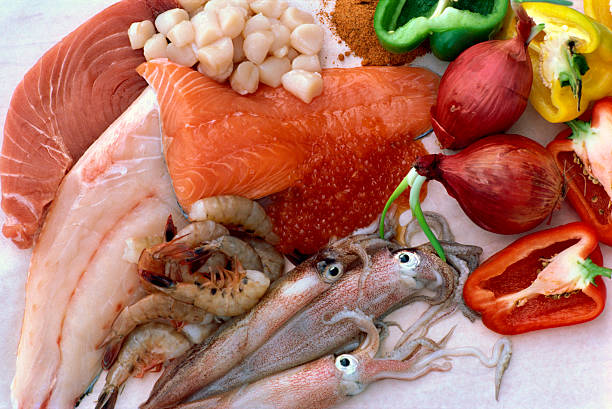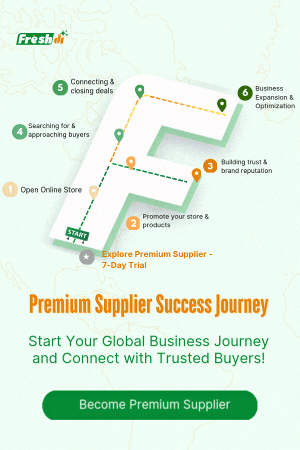Introduction – The Current State of Play: The Seafood Sector in Kenya
Kenya’s seafood industry is riding a wave of transformation in 2025. From new trade policies to supply chain shake-ups and climate-related production issues, the market is shifting fast — and if you’re sourcing seafood from Kenya, you need to catch the current before it turns.
One of the most notable changes? As of July 1, 2025, the Kenya Revenue Authority (KRA) now requires all imports to be accompanied by a Certificate of Origin (COO). This applies to all trade routes — not just preferential ones. Importers have until September 1 to comply. If the COO doesn’t match regional (COMESA) HS codes? Expect penalties or delays.
Meanwhile, geopolitical tensions around the Red Sea have thrown a wrench into shipping to Europe. Transit times have ballooned from 20 to 45 days — nearly double. Exporters are now pivoting to closer markets like India, China, and the Gulf Cooperation Council (GCC) nations.
And it’s not just trade routes causing concern. Kenya’s OND (October to December) short rains are forecasted to be below average, and temperatures are climbing. For aquaculture, that means potential feed shortages and water stress — not ideal when demand is higher than ever.
Local demand for seafood in Kenya is booming, but domestic supply can’t keep up. Tilapia is the nation’s staple fish, and producers like Victory Farms are scaling up fast. But there’s a catch — fish feed is mostly imported and costly. Regional production hubs for feed could be the game-changer everyone’s waiting for.
Add in gaps in cold chain logistics — from limited refrigerated trucks to inadequate storage — and it’s clear the sector is evolving fast. For businesses? Staying alert and agile isn’t optional — it’s essential.
Deep Dive – Breaking News: Critical Updates & Their Effects
The Kenyan seafood sector isn’t just holding steady — it’s making waves.
Record-Breaking Export Growth
2022 was a banner year. Kenya’s seafood export earnings shot up by more than 60%, hitting KES 5.6 billion (USD 40.5 million), up from KES 3.4 billion in 2021. Export volumes jumped over 25% to 13,624 metric tons. What drove this leap? Solid market prices and infrastructure upgrades — especially around Lake Victoria, Lamu, and Mombasa — all played a role.
Major Aquaculture Investments
Aquaculture is the star of Kenya’s seafood story. Victory Farms, East Africa’s leading tilapia producer, landed a $20 million loan from the U.S. International Development Finance Corporation. Their goal? Triple production from 10,000 to 35,000 tons. Even more impressive? Their spoilage rate is under 2%, far below the regional average of 25%.
The government is also betting big on marine aquaculture through the KEMFSED project, backed by a $100 million World Bank investment. At the heart of this is the upcoming National Mariculture Resource and Training Center (NAMARET) in Shimoni. Here, fish farmers will be trained, and a marine hatchery will support sustainable supply. Delays? Yes — but the vision is strong.
Infrastructure and Data Upgrades
The seafood supply chain is getting smarter and stronger. One key upgrade: the fly-over bridge replacing the Mbita causeway on Lake Victoria. It’s improving fish movement and water quality. On the tech side, the Kenya Fisheries Service has added staff and partnered with the World Bank to build a modern fisheries data management system.
Looking Ahead: Market Forecast
The Kenyan seafood market is on a growth trajectory like never before. In 2025 alone, it’s projected to generate USD 3.2 billion. From 2025 to 2030, expect a compound annual growth rate (CAGR) of 10.45%. Processed seafood? That’s also on the rise — expected to grow at 10.16% annually.
Top 7 Verified Seafood Suppliers in Kenya – Adapting to Today’s Market
When selecting suppliers in a shifting market, reliability matters more than ever. These seven suppliers stand out in 2025 based on export consistency, certifications, Freshdi buyer reviews, and adaptability to current trends.
-
The Fresh Products Limited
Known for their premium tilapia and Nile perch, The Fresh Products Limited has built a reputation for timely exports and strong quality control. They’re actively expanding their processing facilities to meet export demand. -
Afrigums
Afrigums is a diversified player with a strong focus on seafood exports. Their in-house logistics and cold storage capabilities give them a competitive edge — especially in the current climate. -
Farmer
Farmer works closely with aquaculture cooperatives across Western Kenya, offering sustainably farmed tilapia and catfish. Their traceability systems are top-notch, making them a favorite among EU buyers. -
Rumina Ltd.
Rumina Ltd. blends traditional fishing practices with modern processing techniques. Their seafood offerings are HACCP-certified and regularly audited for EU compliance. -
Bara Tea Exp., Ltd
Don’t let the name fool you — Bara Tea has a growing seafood division. They recently expanded into mariculture and now export high-grade marine species to GCC markets. -
Fatuma
Fatuma sources fish directly from artisanal fishermen. Their model supports coastal communities and ensures a steady supply of wild-caught seafood. -
Jamestrum Holdings Ltd
Known for robust logistics and market intelligence, Jamestrum is quick to adapt to regulatory changes. Their real-time shipping updates and COO compliance tools make them a top choice for importers.
Dynamic Ranking Note: On platforms like Freshdi, supplier rankings are dynamic. Look out for “Suppliers of the Month” or “Quarter” badges — these reflect real-time performance, order fulfillment, and buyer satisfaction.
Market Navigation – Strategic Responses to The Current Seafood Landscape in Kenya
So, what should businesses be doing right now?
1. Rethink Your Shipping Routes
If you’re shipping to Europe, delays are now the norm. Consider pivoting to faster, closer markets like India or the UAE. It could mean fewer losses and faster payments.
2. Double-Check Documentation
With Kenya’s new Certificate of Origin rules now live, your paperwork needs to be airtight. Double-check HS codes, and make sure your COO is issued by an approved authority — or risk costly delays.
3. Diversify Your Supplier Base
Relying on one region or one supplier? That’s risky in a climate-impacted, geopolitically sensitive market. Use platforms like Freshdi to find verified, agile suppliers who are up to speed with 2025’s new normal.
4. Invest in Cold Chain Readiness
If you’re handling seafood, freshness is everything. Work with suppliers who have access to modern cold storage and transport. It’s the difference between top-dollar exports and rejected cargo.
5. Focus on High-Demand Species
Tilapia and Nile Perch are hot — both locally and abroad. With mariculture expanding, marine species like prawns and snapper are also trending. Align your sourcing strategy accordingly.
Conclusion – Key Takeaways for Businesses in a Rapidly Evolving Market
Kenya’s seafood market in 2025 is dynamic, fast-moving, and full of opportunity — but only for those who can keep up.
Here’s the bottom line:
- Policy changes like the new Certificate of Origin requirement are reshaping import/export protocols.
- Geopolitical tensions are rerouting trade lanes and increasing transit times.
- Climate variability is stressing aquaculture operations and feed supply.
- Demand continues to outstrip supply, with processed seafood rising in popularity.
- Investments in infrastructure, aquaculture, and mariculture are unlocking new capacity.
For businesses, the call to action is clear: Stay informed, stay flexible, and stay connected.
Platforms like Freshdi are essential tools in this environment. From real-time RFQ trends and supplier verification to alerts on policy changes, Freshdi empowers buyers with the data and connections they need to succeed in a rapidly evolving seafood market.
Checklist for Buyers Sourcing Seafood from Kenya in 2025
- ✅ Confirm Certificate of Origin and HS code compliance
- ✅ Assess cold chain capabilities of chosen suppliers
- ✅ Explore alternative markets to Europe (e.g., GCC, India)
- ✅ Prioritize high-demand species like tilapia, Nile perch
- ✅ Use Freshdi for current supplier performance data and RFQs
Future Outlook
Looking ahead, Kenya’s seafood industry is primed for continued growth. With the right investments in sustainability, infrastructure, and regional trade, the nation could become a seafood powerhouse for Africa and beyond.
Aquaculture will play a key role, but success hinges on solving current bottlenecks — from feed production to cold chain logistics. The good news? The momentum is building, and the tools to adapt are already here.
FAQs
1. Why is the Certificate of Origin (COO) now mandatory for imports into Kenya?
The COO is now required to improve trade transparency and ensure alignment with regional trade protocols like COMESA. It helps customs verify the origin of goods and apply correct tariffs.
2. Which Kenyan seafood species are most in demand for export in 2025?
Tilapia and Nile perch remain top choices. However, marine species such as prawns, snapper, and octopus are growing in demand, especially in GCC and Asian markets.
3. How can buyers verify Kenyan seafood suppliers in real-time?
Platforms like Freshdi provide real-time supplier performance data, buyer reviews, certifications, and updated RFQ trends to help you make informed decisions.
4. What’s causing the delays in seafood shipments from Kenya to Europe?
Geopolitical tensions in the Red Sea have disrupted traditional shipping routes, doubling transit times and increasing shipping costs.
5. Is aquaculture in Kenya sustainable?
Yes, especially with companies like Victory Farms leading the way in minimizing spoilage and optimizing feed. Government-backed mariculture initiatives also aim to create sustainable long-term supply chains.
References
- Maersk News Update – August 2025
- Xinhua News on Red Sea Disruptions
- FEWS NET Kenya Food Security Outlook
- AgriFocus Africa – Fish Demand in East Africa
- Maersk Insights on African Agricultural Exports
- Fishery News – Kenya Seafood Export Reports
- DFC Investment in Victory Farms
- Dialogue Earth – Kenya Mariculture Expansion
- Statista – Fish & Seafood Market Kenya 2025


